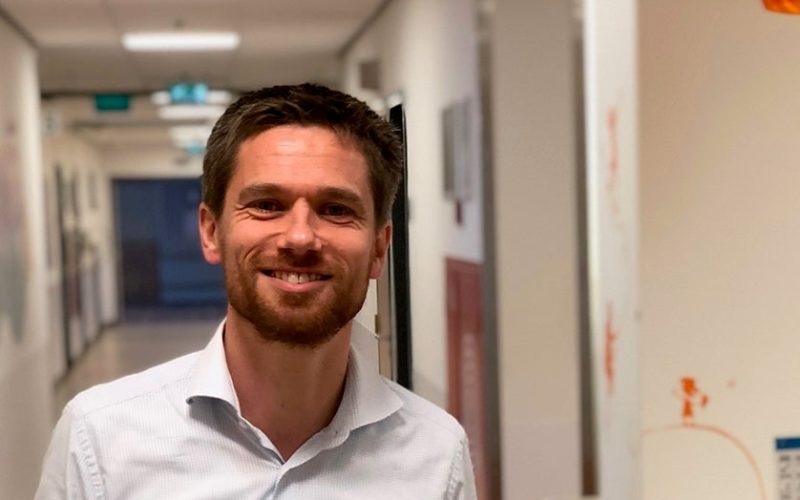Fatigue, the inability to sustain activities such as writing, drinking from a cup and walking, is a major complaint that SMA patients face on a daily basis. However, little is known about how common fatigue is, what causes it and how it can be treated. Developing good measurement tools that can be used to examine fatigue and determine the effect of training and medication is an important first step. So says researcher and pediatric physical therapist Bart Bartels of the SMA Expertise Center UMC Utrecht, who is receiving his doctorate today.
Spinal muscular atrophy (SMA) is an inherited disorder that can lead to severe muscle weakness, limitations in daily life and death. Fatigue, the inability to sustain activities, is also a complaint that occurs regularly. “Because little is still known about fatigue in SMA, it is important to provide insight into this complaint,” Bartels said. His research shows that fatigue occurs in both weak, and relatively strong, patients with SMA. There are also patients with significant muscle weakness who are able to maintain the activities they can still perform.
In addition, it is notable that patients with SMA do tire quickly while performing activities but generally do not feel more fatigued than healthy peers. These findings support the idea that fatigue is an important additional complaint related to the disease, but does not equate to muscle weakness and perceived fatigue. This should be taken into account during treatment, according to Bartels. He also shows in his study that there is still insufficient evidence on the effect and safety of physical training in SMA and that more research needs to be done on an SMA-specific optimal training dose.
But how do you measure fatigue in a group of patients where the differences in impairments are so great? Bartels: “Fatigue in SMA is a difficult complaint to make transparent with a single test, because one person can still walk, but another can only move his arm or hand. Over the past six years, he and colleagues from the SMA Expertise Center and the Pediatric Exercise Center have therefore developed a number of fatigue tests, which for the first time allow fatigue to be measured and compared in both patients with severe and relatively mild forms of SMA. Bartels’ research shows that fatigue is present in 85% of patients with SMA and can be reliably determined with so-called “Endurance Shuttle Tests. The researchers have also ensured that these fatigue tests are now used in several international scientific studies.
The renewed insights into fatigue, and the fatigue tests Bartels developed, made it possible to look at treatment. Researchers at the SMA Center of Expertise, led by Professor Ludo van der Pol, therefore investigated whether the drug Pyridostigmine is effective in SMA. Pyridostigmine is a drug used in the muscle disease Myasthenia Gravis, among others, to improve nerve impulse transmission and thus fatigue. Previous research by one of the researchers at the SMA expertise center, Dr. Wadman, showed that about half of the patients with SMA have impaired impulse transmission.
Bartels: “Pyridostigmine also appears to lead to improvements in endurance in SMA patients, and we were able to detect this by using our newly developed fatigue tests. Patients report being better able to empty their plates, propel their (electric) wheelchair or walk longer without breaks. This study shows that the development and/or selection of reliable measurement tools are essential components of conducting an effective drug trial. That we started with little knowledge about fatigue and have now found a drug that significantly improves the quality of life for SMA patients is, of course, fantastic.”
